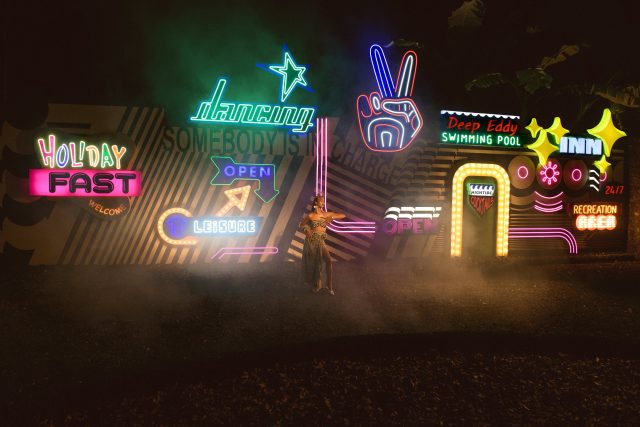Shinsho-an
With just four suites, Shinsho-an offers a unique, bespoke experience that is decidedly luxe yet intimate and homely. Japanese craftsmanship and tradition are present throughout, as evidenced by Shinsho-an’s starting point, the 1966 Hanare teahouse structure and its surrounding, meticulously kept gardens. Hanare has all the fixings of a traditional, sukiya-style teahouse (a tatami mat floor, sliding screens, mud walls and more), and was built by the legendary Sotoji Nakamura. The main building structure was restored by Nakamura’s son, Yoshiaki, with Shinsho-an’s founders collaborating closely with father and son throughout the design process.
Woven across the traditional Japanese craft are sleek and contemporary Western finishes. European-style beds sit atop the tatami flooring, while each room has a tokonoma (a traditional alcove decoration) and flower arrangements by Hanamasa, one of Kyoto’s oldest Japanese florists. Sliding glass doors give way to a personal balcony, while half of the rooms are also home to bathtubs that come with a tranquil view. Elsewhere, Scandinavian touches are apparent through Danish designer Hans Wegner’s creations, including his famed Mama Bear chair.
Food, too, does not disappoint. Higashiyama Ogata, run by the celebrated chef Toshihiro Ogata, is on-site, offering a nine-course dinner omakase that spotlights the purity and freshness of each ingredient. Higashiyama Ogata is the second Ogata restaurant in Kyoto (the first of which bears two Michelin stars). Breakfast is also by Ogata and served in-room, including everything from fresh sashimi and salad to sakura-masu salmon with local pickles, miso soup and rice. Tea aficionados can also rest easy knowing there is a bespoke in-room tea menu that delivers rare tea blends from regions throughout Japan.
shinsho-an.com; [email protected]
Arashiyama Mansion Mama
Stately, serene, and neighbouring the famed Arashiyama bamboo forest. What more could you ask? Mama Arashiyama’s interiors mirror its surroundings with modern minimalism and meticulous craft. Fitting, given that the name Mama was derived from the Japanese phrase sono mama, meaning “as it is”. Each of the ten unique rooms has a bespoke colour palette to best match the natural surrounding scenery, while furniture includes a selection carefully made by local artisans alongside sleek Scandi designs.
The origin story of Mama Arashiyama is an unlikely one – the space was originally a hip pizza restaurant, and the 10-room hotel attachment was built afterwards, just last year. While not quite the Japanese delicacy you might expect, the handcrafted pies here are jam-packed with unique, local ingredients, including the likes of mackerel, shiso pesto and sakura.
Guests are transported from pizzeria to hotel via a large white curtain divider, where contemporary and serene design awaits. Natural materials suffuse the space, with handmade paper lighting by Kyoto artisans Kojima Shoten, stones from the Katsura River and leather and wooden chairs. A stone bathtub sits in the glass-walled bathroom, which spills out into private-walled gardens so windows can be flung open night and day while privacy is still maintained. Contemporary, minimalist and seamlessly embedded into its surroundings, Arashiyama Mansion Mama is one of Kyoto’s newest and best kept secrets.
mama-arashiyama.jp; [email protected]
Garrya Nijo Castle Kyoto
Situated next to UNESCO heritage site Nijo Castle, Garrya Nijo Castle Kyoto offers respite from the hustle and bustle of the city with simplistic design and lush greenery from every angle. By removing the clutter and the unnecessary, Garrya Nijo Castle advocates for a meditative, zen lifestyle while also encouraging sustainability across all fronts. Naturally, the space is also rich in history, with Nijo Castle originally built in 1603 and having witnessed the many cycles of Japan including the timeline of the Tokugawa family throughout the Edo period, distilling an integral component of Kyoto’s very makeup into an intricate and storied space.
Throughout the hotel, “Contemplation Pockets” offer dedicated zones that allow total immersion into nature, while co-living and co-working spaces are awash in shades of muted earth tones to instil feelings of calm tranquillity. Each of the 25 rooms feature inherently Japanese designs that pay homage to the city’s historic past with all the trappings of its tech-forward present, from refined suites with a view of Nijo Castle to bamboo garden rooms with private Japanese garden access, lacquered furniture and headboards with Japanese naguri wood shaving.
Editor
Carina Fischer


















